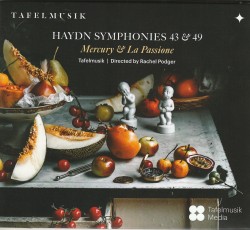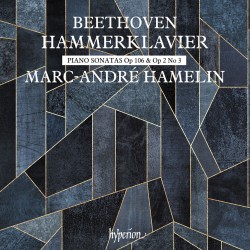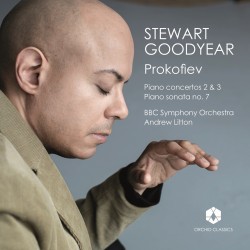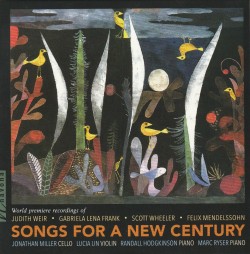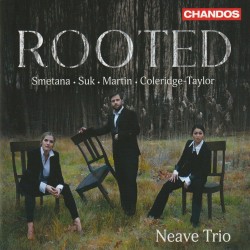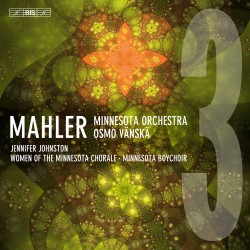 Mahler – Symphony 3
Mahler – Symphony 3
Jennifer Johnston; Women of the Minnesota Chorale; Minnesota Boychoir; Minnesota Orchestra; Osmo Vanska
BIS 2486 (minnesotaorchestra.org)
Mahler – Symphony No.8
Soloists; Minnesota Chorale; National Lutheran Choir; Minnesota Boychoir; Angelica Cantanti Youth Choir; Minnesota Orchestra; Osmo Vanska
BIS BIS-2496 (minnesotaorchestra.org)
The final two installments of Osmo Vänskä’s ongoing Mahler cycle have landed and the box set is now on sale. (Caveat: the Cooke version of the fragmentary Tenth Symphony is included, but there is no performance of Das Lied von der Erde.) These two recordings were patched together from live performances from Vänskä’s final appearances in 2022 after 19 years at the helm of the Minnesota orchestra.
Judging by the performance of the Third Symphony, this orchestra and its conductor have developed a fine rapport over the years and deliver some very lovely playing. Winds and brass are outstanding and the string section is extraordinarily supple, though Vänskä’s party trick of pulling back the orchestra to near inaudibility remains an annoying SACD inspired gimmick to my ears. Initially won over by the exceptional recording from the BIS recording team, certain aspects of the interpretation now strike me as less admirable. Beautiful though the recording may sound, there is an atmosphere of directorial micro-management that loses sight of the over-arching structure of the work. There are beautiful trees to behold indeed, but nary a view of the forest.
Of the six movements of this, the longest symphony in the active repertoire, the performance of the short inner movements fare best. But as to the lengthy first and sixth movements, Vänskä’s reach is beyond his grasp. Nowhere is this more evident than in the final six pages of the concluding Adagio; from figure 28 preceding the reprise of the main theme Mahler writes “Langsam anschwellen” (slowly swelling); the effect in, for example, Leonard Bernstein’s landmark performance, is a thrilling, painful struggle to the summit of glory. Here we find a routine ritardando that somehow wanders into a pedestrian fortissimo. Amongst recent recordings I would suggest seeking out Manfred Honeck’s 2010 Pittsburgh performance on the Exton label instead, a fine example of what a true Mahler evangelist can bring to this score.
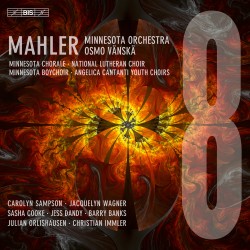 I must confess to an abiding ambivalence about Mahler’s Eighth Symphony, the so-called “Symphony of a Thousand.” Teeming with what T.W. Adorno called “the ceremonial pretensions of the obviously fugal manner,” the two parts of the work are set to the Catholic hymn Veni Creator Spiritus and the closing scene of Goethe’s Faust, a pair of uncharacteristically crowd-pleasing choices from a man whose works are essentially about his inner self. It’s as if Mahler was saying to his carping, anti-Semitic critics, “Don’t you see? I am one of you!” Composed swiftly in the span of six weeks, he proclaimed the work his “gift to the nation” and dedicated it to his wife Alma.
I must confess to an abiding ambivalence about Mahler’s Eighth Symphony, the so-called “Symphony of a Thousand.” Teeming with what T.W. Adorno called “the ceremonial pretensions of the obviously fugal manner,” the two parts of the work are set to the Catholic hymn Veni Creator Spiritus and the closing scene of Goethe’s Faust, a pair of uncharacteristically crowd-pleasing choices from a man whose works are essentially about his inner self. It’s as if Mahler was saying to his carping, anti-Semitic critics, “Don’t you see? I am one of you!” Composed swiftly in the span of six weeks, he proclaimed the work his “gift to the nation” and dedicated it to his wife Alma.
Successful performances of this monumental work depend very much on the casting of the seven vocal soloists and in this case they are well chosen indeed. Sonically however the massive choral forces, recorded at the height of the covid panic, are constrained by the wearing of masks. Despite discreet tweaking by the BIS recording team the softer portions of the work remain distinctly muffled. I was also disappointed by the woefully underpowered contributions from the organ. Within the context of this Mahler cycle it is one of the more successful efforts, but Vänskä’s direction again strikes me as intrinsically unfocused.
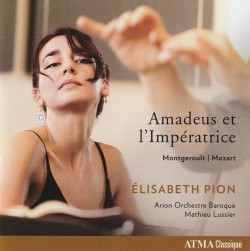 Amadeus et l’Imperatrice - Montgeroult | Mozart
Amadeus et l’Imperatrice - Montgeroult | Mozart

